THE CONSTITUTION OF KENYA, 2010
These linked webpages can be related to different topics, categories, or sections, allowing users to navigate and explore different content within the constitution of Kenya, 2010CHAPTER FOUR—THE BILL OF RIGHTS PART 1—GENERAL PROVISIONS RELATING TO THE BILL OF RIGHTS
PART 2—RIGHTS AND FUNDAMENTAL FREEDOMS
PART 3—SPECIFIC APPLICATION OF RIGHTS
PART 4—STATE OF EMERGENCY PART 5—KENYA NATIONAL HUMAN RIGHTS AND EQUALITY COMMISSION CHAPTER FIVE—LAND AND ENVIRONMENT PART 1—LAND
PART 2— ENVIRONMENT AND NATURAL RESOURCES CHAPTER SIX—LEADERSHIP AND INTEGRITY
CHAPTER SEVEN—REPRESENTATION OF THE PEOPLE PART 1—ELECTORAL SYSTEM AND PROCESS
PART 2—INDEPENDENT ELECTORAL AND BOUNDARIES COMMISSION AND DELIMITATION OF ELECTORAL UNITS
PART 3—POLITICAL PARTIES CHAPTER EIGHT—THE LEGISLATURE PART 1—ESTABLISHMENT AND ROLE OF PARLIAMENT
PART 2—COMPOSITION AND MEMBERSHIP OF PARLIAMENT
PART 3—OFFICES OF PARLIAMENT PART 4—PROCEDURES FOR ENACTING LEGISLATION
PART 5—PARLIAMENT’S GENERAL PROCEDURES AND RULES
PART 6—MISCELLANEOUS CHAPTER NINE—THE EXECUTIVE PART 1—PRINCIPLES AND STRUCTURE OF THE NATIONAL EXECUTIVE PART 2—THE PRESIDENT AND DEPUTY PRESIDENT
PART 3—THE CABINET
PART 4—OTHER OFFICES CHAPTER TEN—JUDICIARY PART 1—JUDICIAL AUTHORITY AND LEGAL SYSTEM
PART 2—SUPERIOR COURTS
PART 3—SUBORDINATE COURTS PART 4—JUDICIAL SERVICE COMMISSION CHAPTER ELEVEN—DEVOLVED GOVERNMENT PART 1—OBJECTS AND PRINCIPLES OF DEVOLVED GOVERNMENT PART 2—COUNTY GOVERNMENTS
PART 3—FUNCTIONS AND POWERS OF COUNTY GOVERNMENTS
PART 4—THE BOUNDARIES OF COUNTIES PART 5—RELATIONSHIPS BETWEEN GOVERNMENTS
PART 6—SUSPENSION OF COUNTY GOVERNMENTS PART 7—GENERAL
CHAPTER TWELVE—PUBLIC FINANCE PART I—PRINCIPLES AND FRAMEWORK OF PUBLIC FINANCE
PART 2—OTHER PUBLIC FUNDS
PART 3—REVENUE-RAISING POWERS AND THE PUBLIC DEBT
PART 4—REVENUE ALLOCATION
PART 5—BUDGETS AND SPENDING
PART 6—CONTROL OF PUBLIC MONEY
PART 7— FINANCIAL OFFICERS AND INSTITUTIONS CHAPTER THIRTEEN—THE PUBLIC SERVICE PART 1—VALUES AND PRINCIPLES OF PUBLIC SERVICE PART 2—THE PUBLIC SERVICE COMMISSION
PART 3—TEACHERS SERVICE COMMISSION CHAPTER FOURTEEN—NATIONAL SECURITY PART 1—NATIONAL SECURITY ORGANS
PART 2—THE KENYA DEFENCE FORCES PART 3—THE NATIONAL INTELLIGENCE SERVICE PART 4—THE NATIONAL POLICE SERVICE CHAPTER FIFTEEN—COMMISSIONS AND INDEPENDENT OFFICES
Schedules:
0 Comments
Provisions and Processes for Amending the Kenya Constitution: A Comprehensive ReviewCHAPTER SIXTEEN—AMENDMENT OF THIS CONSTITUTION
Overview;In CHAPTER SIXTEEN of the Kenya Constitution, 2010, the provisions and processes for amending the constitution are outlined. This chapter ensures that the constitution can be modified when necessary, while also maintaining the integrity and stability of the document.
The main provision is found in Article 255, which states that any proposed amendment to the Constitution must be enacted in accordance with either Article 256 or Article 257, and approved by a referendum if it relates to specific matters. These matters include the supremacy of the Constitution, the territory of Kenya, the sovereignty of the people, the national values and principles of governance, the term of office of the President, the independence of the Judiciary and the commissions and independent offices, the functions of Parliament, and the objects, principles, and structure of devolved government. Amendment by parliamentary initiative is outlined in Article 256. This provision states that a Bill to amend the Constitution can be introduced in either the National Assembly or the Senate. The Bill must be supported by a majority of the members of each House, and if it is approved, it is then submitted to the President for assent. Amendment by popular initiative is discussed in Article 257. This provision allows for an amendment to be initiated by the people. It can be initiated through a popular initiative signed by at least one million registered voters, or through a county assembly passing a resolution to initiate the amendment. The proposed amendment must then be supported by at least twenty percent of the registered voters in each of at least half of the counties. If these conditions are met, the amendment is submitted to the Independent Electoral and Boundaries Commission, which verifies the signatures and prepares the draft Bill. The Bill is then submitted to the county assemblies for approval, and if it is approved by a majority of the county assemblies, it proceeds to a referendum. In the referendum, the amendment must be supported by a simple majority of the citizens voting. These provisions and processes outlined in CHAPTER SIXTEEN of the Kenya Constitution, 2010 ensure that amendments to the constitution are carried out in a transparent and democratic manner. Whether through parliamentary initiative or popular initiative, the constitution can be modified to address the evolving needs and aspirations of the Kenyan people. Citation: The Kenya constitution, 2010 Understanding Citizenship in Kenya: Rights, Acquisitions, and RevocationsCHAPTER THREE—CITIZENSHIP Introduction:
Citizenship is a fundamental aspect of belonging and identity within a nation. In the Constitution of Kenya 2010, comprehensive provisions are outlined to ensure the protection and regulation of citizenship in the country. This blog post will delve into the various aspects of citizenship in Kenya as enshrined in the Constitution, including entitlements, retention and acquisition, birthright citizenship, registration, dual citizenship, and the revocation process. Understanding these provisions is crucial for both citizens and those seeking to become citizens of Kenya. Entitlements of Citizens: Every citizen in Kenya is entitled to the rights, privileges, and benefits of citizenship, subject to the limits provided or permitted by the Constitution . These entitlements include the right to a Kenyan passport and any document of registration or identification issued by the State to citizens . These provisions ensure that citizens can enjoy the full benefits and exercise their rights within the country. Retention and Acquisition of Citizenship: The Constitution outlines provisions for both the retention and acquisition of citizenship. Retention refers to the ability of individuals to maintain their citizenship status, even if they acquire citizenship of another country . Additionally, the Constitution provides guidelines for the acquisition of citizenship, including through birth, registration, and adoption . These provisions ensure that individuals have avenues to become citizens of Kenya based on their circumstances and eligibility. Citizenship by Birth: Citizenship by birth is recognized under the Constitution, which states that a Kenyan citizen is a citizen by birth if they acquired citizenship under specific provisions or would have acquired citizenship if certain conditions were met . The Constitution also grants citizenship by birth to children found in Kenya whose nationality and parents are not known . These provisions ensure that individuals born in Kenya or found within its borders are granted citizenship, even in cases where their parentage may be unknown. Citizenship by Registration: The Constitution allows for citizenship by registration, which applies to individuals who have been married to a citizen for a period of at least seven years . Lawfully resident individuals who have been in Kenya for a continuous period of at least seven years can also apply for citizenship by registration . Furthermore, adopted children of citizens are entitled to be registered as citizens . These provisions provide avenues for individuals with certain connections to Kenyan citizens or who have resided in Kenya for a significant period to acquire citizenship. Dual Citizenship: Kenya recognizes dual citizenship, allowing its citizens to hold citizenship of another country alongside their Kenyan citizenship . This provision grants individuals the freedom to maintain their ties to Kenya while enjoying the benefits and opportunities of citizenship in another country. However, the Constitution also provides guidelines for the revocation of citizenship in specific circumstances. Revocation of Citizenship: The Constitution outlines the process for the revocation of citizenship in Kenya. Parliament has the authority to enact legislation establishing conditions for granting citizenship to individuals who are citizens of other countries . This legislation may also include provisions for the revocation of citizenship in specific cases . These provisions ensure that citizenship can be revoked in exceptional circumstances, such as cases involving national security or fraudulent acquisition of citizenship. Conclusion: The Constitution of Kenya 2010 provides comprehensive guidelines and provisions regarding citizenship in the country. These provisions ensure that citizens are entitled to their rights and privileges, and outline various pathways for individuals to acquire citizenship through birth, registration, and adoption. The recognition of dual citizenship allows Kenyan citizens to maintain connections with other countries, while the revocation process ensures that citizenship is protected and regulated in specific circumstances. Understanding the provisions of citizenship in Kenya is essential for individuals seeking to become citizens and for citizens themselves to exercise their rights and responsibilities within the nation. Sources:
Ensuring Effective Enforcement and Interpretation: Key Provisions in CHAPTER SEVENTEEN of the Kenya Constitution, 2010CHAPTER SEVENTEEN—GENERAL PROVISIONS
Overview;In CHAPTER SEVENTEEN of the Kenya Constitution, 2010, the general provisions and enforcement mechanisms are outlined to ensure the effective implementation and interpretation of the constitution.
Article 258 focuses on the enforcement of the constitution. It provides that every person has the right to institute court proceedings to enforce the provisions of the constitution. This means that any individual who believes that their rights or the rights of others are being violated can seek legal remedies to protect and uphold the constitution. Article 259 deals with construing the constitution. It states that the constitution shall be interpreted in a manner that promotes its purposes, values, and principles, advances the rule of law, and contributes to good governance. This provision emphasizes the importance of interpreting the constitution in a way that upholds its spirit and intent, rather than relying on strict literal interpretations. Article 260 addresses the interpretation of the constitution. It provides guidance on how certain terms and phrases used in the constitution should be understood. It states that in interpreting the constitution, the courts shall promote the values that underlie an open and democratic society based on human dignity, equality, equity, and freedom. This provision ensures that the courts prioritize the fundamental principles and values of the constitution when interpreting its provisions. Together, these provisions in CHAPTER SEVENTEEN of the Kenya Constitution, 2010 serve as crucial mechanisms for the enforcement and interpretation of the constitution. They empower individuals to seek justice when their constitutional rights are violated and guide the courts in interpreting the constitution in a manner that upholds its fundamental principles. By ensuring the effective enforcement and interpretation of the constitution, these provisions play a vital role in safeguarding the rights and liberties of the Kenyan people. Citation: The Kenya constitution, 2010 PART 1—GENERAL PROVISIONS RELATING TO THE BILL OF RIGHTS
PART 2—RIGHTS AND FUNDAMENTAL FREEDOMS
PART 3—SPECIFIC APPLICATION OF RIGHTS PART 4—STATE OF EMERGENCYPART 5—KENYA NATIONAL HUMAN RIGHTS AND EQUALITY COMMISSIONExplanations in Summary:Chapter Four of the Kenyan Constitution is dedicated to the Bill of Rights, which is considered an integral part of Kenya's democratic state. The Bill of Rights serves as a framework for social, economic, and cultural policies, with the purpose of preserving the dignity of individuals and communities, promoting social justice, and realizing the potential of all human beings [1].
This chapter encompasses various provisions and fundamental freedoms that are essential to ensuring a just and equitable society. It guarantees rights such as the right to life [3], equality and freedom from discrimination [3], human dignity [3], freedom and security of the person [3], privacy [3], freedom of conscience, religion, belief, and opinion [3]. Additionally, the Bill of Rights prohibits certain practices, such as slavery, servitude, and forced labor [3]. It also recognizes and protects other fundamental rights and freedoms that may not be limited [1]. The application of the Bill of Rights extends to all laws and binds all state organs and individuals [5]. It is the duty of the courts to interpret and enforce the provisions of the Bill of Rights, developing the law to the extent it does not give effect to a right or fundamental freedom [5]. This ensures that the rights and freedoms enshrined in the Constitution are upheld and protected. The Bill of Rights reflects the essential values of human rights, equality, freedom, democracy, social justice, and the rule of law [3]. It affirms the sovereignty of the people and their right to determine the form of governance in the country [3]. In conclusion, Chapter Four of the Kenyan Constitution, which encompasses the Bill of Rights, plays a vital role in safeguarding the rights and freedoms of individuals in Kenya. It provides a legal framework to protect human dignity, promote social justice, and ensure that all citizens can fully realize their potential. Sources:
CHAPTER ONE—SOVEREIGNTY OF THE PEOPLE AND SUPREMACY OF THIS CONSTITUTIONChapter One of the Constitution of Kenya, titled "Sovereignty of the People and Supremacy of this Constitution," addresses the fundamental principles that form the basis of the Kenyan governance system.
It begins by emphasizing the sovereignty of the people, highlighting the ultimate power and authority of the citizens in decision-making and shaping the nation's destiny. The chapter then asserts the supremacy of the Constitution itself, emphasizing that all laws and actions must conform to its provisions. This ensures that the Constitution serves as the highest legal authority in the country, guiding and governing all aspects of governance and society. Additionally, the chapter emphasizes the importance of defending and protecting the Constitution, highlighting the collective responsibility to safeguard its integrity and principles against any threats or attempts to undermine it. Content:The Republic: A Fundamental Pillar of the Kenyan ConstitutionIntroduction:
The Republic is a fundamental aspect of the Kenyan Constitution of 2010, emphasizing the sovereignty of the people and the supremacy of the Constitution. This essay delves into the various elements encompassed within the chapter on the Republic, including its territorial scope, the concept of devolution, the recognition of national languages, state and religion, national symbols, and the promotion of national values and principles of governance. Territorial Scope: The Constitution of Kenya clearly states the territory of Kenya [1]. It defines and outlines the geographical boundaries that belong to the Republic, providing a sense of identity and belonging to the Kenyan people. This territorial scope ensures that all citizens are aware of the extent of their nation and its sovereignty. Devolution and Access to Services: One of the significant provisions within the chapter on the Republic is the concept of devolution [1]. Devolution aims to bring services closer to the people by decentralizing power and resources to the county level. This constitutional provision ensures that citizens have access to services such as healthcare, education, and infrastructure in their respective counties, promoting inclusivity, and equitable development across the nation. National, Official, and Other Languages: Recognizing the cultural diversity in Kenya, the Constitution acknowledges the importance of national, official, and other languages [1]. By recognizing multiple languages, the Constitution ensures that linguistic diversity is preserved and that citizens can communicate and access services in their preferred language. This provision promotes inclusivity and cultural preservation. State and Religion: The Constitution upholds the principle of a secular state, ensuring that no religion is favored over others [1]. This provision guarantees religious freedom and protects against discrimination based on religious beliefs. By maintaining a separation between state and religion, the Constitution upholds the rights and freedoms of all citizens, irrespective of their religious affiliations. National Symbols and National Days: The chapter on the Republic also recognizes the importance of national symbols and national days [1]. These symbols, including the national flag, national anthem, and coat of arms, foster a sense of unity and pride among Kenyans. National days, such as Independence Day, serve as reminders of the country's history, struggles, and achievements, reinforcing a collective national identity. National Values and Principles of Governance: The Constitution of Kenya places great emphasis on national values and principles of governance [1]. These values, including patriotism, national unity, human dignity, rule of law, and integrity, guide the conduct of public officials and promote good governance. By upholding these values, the Constitution strives to create a just and equitable society where the rights and welfare of all citizens are protected. Conclusion: The chapter on the Republic in the Kenyan Constitution of 2010 encompasses crucial aspects that define the nation's identity, governance, and values. From territorial scope to devolution, recognition of languages, secularism, and the promotion of national symbols and values, this chapter reflects the aspirations and principles of the Kenyan people. By upholding these provisions, Kenya continues to strengthen its democratic foundations and strive towards a just and prosperous society for all [1]. Understanding Chapter 11 of the Kenya Constitution 2010: Empowering Devolved Government for Effective GovernanceCHAPTER ELEVEN—DEVOLVED GOVERNMENT PART 1—OBJECTS AND PRINCIPLES OF DEVOLVED GOVERNMENT
PART 2—COUNTY GOVERNMENTS
PART 3—FUNCTIONS AND POWERS OF COUNTY GOVERNMENTS
PART 4—THE BOUNDARIES OF COUNTIES
PART 5—RELATIONSHIPS BETWEEN GOVERNMENTS
PART 6—SUSPENSION OF COUNTY GOVERNMENTS
PART 7—GENERAL
Review;Chapter 11 of the Kenya Constitution 2010 is dedicated to the establishment and functioning of devolved government in Kenya. This chapter recognizes the importance of decentralizing power and resources to ensure effective governance, equitable distribution of resources, and enhanced checks and balances.
According to the available documents, the principles of devolved government are outlined in Section 175 of Chapter 11. These principles include the following:
The purpose of devolved government, as outlined in the available documents, is to ensure accessible services throughout Kenya, equitable sharing of national and local resources, and the decentralization of state organs, their functions, and services from the capital. Devolved government also aims to enhance checks and balances and the separation of powers, promoting effective governance at both the national and county levels. Chapter 11 of the Kenya Constitution 2010 recognizes the importance of devolved government in promoting inclusive and participatory governance. It empowers county governments to have their own legislative and executive arms, allowing them to make decisions and provide services that are responsive to the needs of their respective counties. In conclusion, Chapter 11 of the Kenya Constitution 2010 focuses on the establishment and functioning of devolved government in Kenya. It emphasizes the principles of democratic governance, financial autonomy, and gender representation in county governments. The chapter aims to ensure effective governance, equitable distribution of resources, and enhanced checks and balances. By decentralizing power and resources, Kenya seeks to promote inclusive and participatory governance at both the national and county levels. Citation: The Kenya Constitution, 2010 Principles and Framework of Public Finance in the Kenya Constitution 2010: An OverviewCHAPTER TWELVE—PUBLIC FINANCE PART I—PRINCIPLES AND FRAMEWORK OF PUBLIC FINANCE
PART 2—OTHER PUBLIC FUNDS
PART 3—REVENUE-RAISING POWERS AND THE PUBLIC DEBT
PART 4—REVENUE ALLOCATION
PART 5—BUDGETS AND SPENDING
PART 6—CONTROL OF PUBLIC MONEY
PART 7— FINANCIAL OFFICERS AND INSTITUTIONS
Overview;CHAPTER TWELVE—PUBLIC FINANCE in the Kenya Constitution 2010 outlines the principles and framework of public finance in the Republic. The chapter emphasizes the importance of openness, accountability, and public participation in financial matters. It aims to promote an equitable society by sharing the burden of taxation fairly and ensuring the equitable distribution of revenue between national and county governments. Additionally, this chapter highlights the need to promote the equitable development of the country, including making special provisions for marginalized groups and areas.
The chapter also emphasizes the importance of sharing the burdens and benefits of resource use and public borrowing equitably between present and future generations. It emphasizes the responsible use of public money and the need for financial management to be responsible and clear in fiscal reporting. The chapter further addresses specific aspects of public finance, including the establishment of revenue funds for county governments, a contingencies fund, and loan guarantees by the national government. It also addresses financial control, accounts and audit of public entities, and procurement of public goods and services. In terms of time specifications, the chapter sets timelines for various provisions. For example, the accounts and audit of public entities and procurement of public goods and services are required to be carried out within four years. The values and principles of public service are to be implemented within four years as well. The establishment of national security organs and the command of the National Police Service have a timeframe of two years each. Any other legislation required by the Constitution has a timeline of five years. To ensure a smooth transition, the chapter includes transitional and consequential provisions outlined in the Sixth Schedule. These provisions specify the timeframes for enacting legislation to effect various chapters and articles of the Constitution. In conclusion, CHAPTER TWELVE—PUBLIC FINANCE of the Kenya Constitution 2010 establishes the principles and framework for public finance in the Republic. It emphasizes openness, accountability, and public participation while promoting an equitable society and responsible financial management. The chapter also sets specific timelines for the implementation of various provisions and includes transitional provisions for a smooth transition. Citation: The Kenya constitution, 2010 Land, Environment, and Human Rights: Kenya's Constitutional FrameworkCHAPTER FIVE—LAND AND ENVIRONMENT
Explained;Chapter Five of the Constitution of Kenya, 2010, focuses on "Land and Environment." This chapter addresses key principles and policies concerning land, the environment, and natural resources in Kenya [2].
The first part of Chapter Five, "Land," includes provisions related to land policy, classification of land, and the different types of land ownership. It recognizes public land, community land, and private land, and sets guidelines for the regulation of land use and property. The chapter also establishes the National Land Commission and outlines the legislative framework for land-related matters [2]. The second part of the chapter, "Environment and Natural Resources," highlights the obligations to protect and conserve the environment. It emphasizes the enforcement of environmental rights and the importance of agreements relating to natural resources. Legislation regarding the environment is also discussed, underscoring the significance of sustainable practices and responsible management of natural resources [2]. Chapter Five reflects Kenya's commitment to sustainable development, the protection of natural resources, and the equitable use and management of land. It recognizes the interdependence between land and the environment, acknowledging the need to balance economic growth with environmental conservation [2]. Overall, Chapter Five of the Constitution of Kenya, 2010, lays the foundation for responsible land management, environmental conservation, and the promotion of sustainable development in the country. It provides a comprehensive framework to guide land-related decisions, protect environmental rights, and ensure the responsible use of natural resources [2]. Sources:
Ensuring Independence and Accountability: Provisions for Commissions and Independent Offices in the Kenya Constitution, 2010CHAPTER FIFTEEN—COMMISSIONS AND INDEPENDENT OFFICES
Overview;CHAPTER FIFTEEN—COMMISSIONS AND INDEPENDENT OFFICES in the Kenya Constitution, 2010 establishes the framework for the functioning of various commissions and independent offices in the country. According to the Constitution, these commissions and offices are subject only to the Constitution and the law, and they are independent entities that are not subject to the direction or control of any person or authority.
The Constitution recognizes the importance of providing adequate funding to enable each commission and independent office to perform its functions. Parliament is tasked with allocating sufficient funds for this purpose, and the budget of each commission and independent office is treated as a separate vote. In terms of composition, each commission is required to consist of at least three, but not more than nine, members. The appointment process for the chairperson and members of a commission, as well as for the holder of an independent office, involves identification and recommendation as prescribed by national legislation, approval by the National Assembly, and appointment by the President. It is also mandated that individuals being appointed must possess the specific qualifications required by the Constitution or national legislation. Furthermore, certain commissions and independent offices have the power to issue a summons to a witness for the purpose of their investigations. These include the Kenya National Human Rights and Equality Commission, the Judicial Service Commission, the National Land Commission, and the Auditor-General. Each commission and independent office is considered a body corporate with perpetual succession and a seal, and they have the capacity to sue and be sued in their corporate name. Lastly, these commissions and independent offices are required to submit a report to the President and Parliament as soon as practicable after the end of each financial year. In summary, CHAPTER FIFTEEN of the Kenya Constitution, 2010 establishes the principles and provisions for the functioning, composition, appointment, and reporting of commissions and independent offices in the country. It emphasizes their independence, the allocation of adequate funds, and the need for transparency and accountability in their operations. Citation: The Kenya constitution, 2010 Leadership and Integrity in the Constitution of Kenya, 2010CHAPTER SIX—LEADERSHIP AND INTEGRITY
Overview;Chapter 6 of the Constitution of Kenya, 2010 focuses on Leadership and Integrity. It establishes the principles and standards that public officers should adhere to in order to promote good governance, transparency, and accountability. The chapter encompasses various articles that address the qualifications, conduct, and responsibilities of individuals holding public office.
Article 73 outlines the principles and values that should guide public officers in their service to the people. These principles include integrity, transparency, accountability, and the promotion of national unity. Public officers are expected to uphold these values in the performance of their duties [1]. Article 75 establishes the qualifications for holding public office. It states that a person is eligible for appointment as a public officer if they possess the necessary qualifications, competence, and integrity required for the particular office. This provision ensures that individuals appointed to public positions are competent and capable of fulfilling their responsibilities [1]. Article 76 sets forth the responsibilities of public officers. It requires them to serve the people of Kenya with utmost dedication, honesty, and impartiality. Public officers are also expected to be responsive to the needs of the public and to act in the best interest of the country. This article emphasizes the importance of public officers in serving the public and advancing the welfare of the nation [1]. Article 77 establishes the code of conduct for public officers. It outlines the ethical standards that public officers should adhere to, including the avoidance of conflicts of interest and the declaration of their income, assets, and liabilities. This provision aims to promote transparency and prevent corruption in public service [1]. Article 79 establishes the Ethics and Anti-Corruption Commission, which is tasked with promoting and enforcing ethical standards among public officers. The commission has the authority to investigate cases of corruption, unethical conduct, and breaches of the code of conduct by public officers. This provision reinforces the commitment to combat corruption and ensure accountability in public service [1]. Overall, Chapter 6 of the Constitution of Kenya, 2010 underscores the importance of leadership and integrity in public service. It sets clear standards and expectations for public officers, promoting transparency, accountability, and ethical conduct. By upholding these principles, Kenya aims to foster good governance and build a strong foundation for sustainable development. Sources:
The Public Service and National Security: An Overview of Chapter Thirteen of the Kenya Constitution, 2010CHAPTER THIRTEEN—THE PUBLIC SERVICE PART 1—VALUES AND PRINCIPLES OF PUBLIC SERVICE
PART 2—THE PUBLIC SERVICE COMMISSION
PART 3—TEACHERS SERVICE COMMISSION
Overview;Chapter Thirteen of the Kenya Constitution, 2010, titled "The Public Service," outlines the principles and structure of the public service in Kenya. This chapter is divided into different parts, each addressing a specific aspect of the public service.
Part One of Chapter Thirteen focuses on the values and principles of the public service. It emphasizes the importance of upholding high standards of professional ethics, promoting the efficient, effective, and economic use of resources, and ensuring the responsive, prompt, effective, impartial, and equitable provision of services. Additionally, the chapter highlights the significance of involving the people in the policy-making process, ensuring accountability for administrative acts, and promoting transparency and the provision of timely and accurate information to the public. It also emphasizes the importance of fair competition and merit-based appointments and promotions, while also upholding the representation of Kenya's diverse communities and providing equal opportunities for appointment, training, and advancement for all individuals in the public service. Part Two of Chapter Thirteen focuses on the establishment and functions of the Public Service Commission. The Public Service Commission is responsible for overseeing the recruitment, appointment, and promotion of public officers. It ensures that these processes are conducted fairly and based on merit. The Commission also has the power to investigate and take disciplinary action against public officers who breach their code of conduct. Furthermore, this part addresses the staffing of county governments, emphasizing the importance of having qualified personnel to serve at the county level. It also outlines measures to protect public officers from victimization or unfair treatment. Part Three of Chapter Thirteen introduces the Teachers Service Commission, which is responsible for the management and regulation of the teaching profession in Kenya. This commission oversees the recruitment, training, and discipline of teachers, ensuring that they meet the required standards. Moving on to Chapter Fourteen, titled "National Security," it is related to the public service as it addresses the principles of national security and the establishment of various national security organs. This includes the Kenya Defence Forces, the National Intelligence Service, and the National Police Service. These organs play a crucial role in safeguarding the security and well-being of the country and its citizens. In summary, Chapter Thirteen of the Kenya Constitution, 2010 provides an overview of the public service in Kenya. It highlights the values and principles that guide the public service, the establishment and functions of the Public Service Commission, the role of the Teachers Service Commission, and also touches on national security organs. This chapter serves as a comprehensive guide for the structure, functioning, and principles of the public service in Kenya. Citation: The Kenya Constitution, 2010 Representation of the People: Electoral System and Process in KenyaPART 1—ELECTORAL SYSTEM AND PROCESS
PART 2—INDEPENDENT ELECTORAL AND BOUNDARIES COMMISSION AND DELIMITATION OF ELECTORAL UNITS
PART 3—POLITICAL PARTIES Explained;Chapter 7 of the Kenya Constitution focuses on the representation of the people through the electoral system and process [2]. The chapter outlines the general principles that govern the electoral system, ensuring the exercise of political rights, fair representation, and equality of vote [6]. One of the key principles is the freedom of citizens to exercise their political rights [6]. This includes the right to vote and participate in the electoral process [2]. The electoral system aims to achieve fair representation by ensuring that not more than two-thirds of the members of elective public bodies are of the same gender [6]. This promotes gender equality and inclusivity in political decision-making [2]. The electoral system also emphasizes the fair representation of persons with disabilities [6]. Measures are put in place to enable their participation in the electoral process [2]. Universal suffrage, based on the aspiration for fair representation and equality of vote, is a fundamental principle [6]. This ensures that every eligible citizen has the right to vote and that their vote carries equal weight [2]. Free and fair elections are essential components of the electoral system in Kenya [6]. The system upholds the principles of secret ballot, ensuring the secrecy of the voter's choice [6]. The chapter also addresses electoral disputes, providing a mechanism for resolving conflicts that may arise during the electoral process [2]. Overall, Chapter 7 of the Kenya Constitution highlights the importance of fair representation, free and fair elections, and citizen participation in the electoral system. By upholding these principles, Kenya aims to foster a democratic society where the voices of all citizens are heard and respected. Theme:Ensuring Fair Representation and Democratic Participation in Kenya's Electoral System.
Safeguarding National Security: An Overview of Chapter Fourteen of the Kenya ConstitutionCHAPTER FOURTEEN—NATIONAL SECURITY PART 1—NATIONAL SECURITY ORGANS
PART 2—THE KENYA DEFENCE FORCES
PART 3—THE NATIONAL INTELLIGENCE SERVICE
PART 4—THE NATIONAL POLICE SERVICE
Overview;Chapter Fourteen of the Kenya Constitution, titled "National Security," provides an overview of the principles, organs, and functions related to national security in Kenya. This chapter aims to protect Kenya's territorial integrity, sovereignty, and the rights and freedoms of its people. It emphasizes the importance of adhering to the rule of law, democracy, and human rights in the pursuit of national security.
According to the Constitution, national security encompasses the protection against both internal and external threats to Kenya's territorial integrity, sovereignty, and various national interests. These interests include the well-being and rights of the people, their property, peace, stability, and prosperity. The national security of Kenya is subject to the authority of the Constitution and Parliament, ensuring that it operates within the legal framework established by the Constitution. The principles guiding national security in Kenya are outlined in this chapter. National security must be pursued in compliance with the law and with utmost respect for the rule of law, democracy, human rights, and fundamental freedoms. This ensures that actions taken in the name of national security do not infringe upon the rights and freedoms of the Kenyan people. Furthermore, the chapter emphasizes the importance of respecting the diverse culture of the communities within Kenya. National security organs, including the Kenya Defence Forces, the National Intelligence Service, and the National Police Service, are required to perform their functions and exercise their powers while respecting the cultural diversity of the Kenyan people. This promotes inclusivity and ensures that the national security apparatus is representative of the nation's diverse population. The recruitment process for national security organs must reflect the diversity of the Kenyan people in equitable proportions. This provision ensures that the composition of these organs is representative of the nation's demographics, further reinforcing the principle of inclusivity in national security matters. The chapter also establishes the National Security Council, which consists of various key government officials, including the President, Deputy President, Cabinet Secretaries responsible for defense, foreign affairs, and internal security, as well as the Attorney-General, Chief of Kenya Defence Forces, Director-General of the National Intelligence Service, and Inspector-General of the National Police Service. The Council exercises supervisory control over national security organs and integrates domestic, foreign, and military policies to enhance cooperation and effectiveness among these organs. In conclusion, Chapter Fourteen of the Kenya Constitution, titled "National Security," provides a comprehensive framework for the protection and promotion of national security in Kenya. It emphasizes the importance of adhering to the rule of law, democracy, human rights, and fundamental freedoms in pursuit of national security objectives. The chapter also ensures diversity and inclusivity within national security organs, reflecting the rich cultural tapestry of the Kenyan people. Citation: The Kenya Constitution, 2010 The Significance of Reflecting Regional and Ethnic Diversity in the Composition of the National Executive According to the Kenya Constitution 2010CHAPTER TEN—JUDICIARY PART 1—JUDICIAL AUTHORITY AND LEGAL SYSTEM
PART 2—SUPERIOR COURTS
PART 3—SUBORDINATE COURTS
PART 4—JUDICIAL SERVICE COMMISSION
Explained;In Chapter 10 of the Kenya Constitution 2010, the significance of reflecting regional and ethnic diversity in the composition of the national executive is highlighted. This provision recognizes the importance of inclusivity and representation of all Kenyan communities in the highest levels of governance.
The Kenya Constitution acknowledges the diverse nature of the country's population and the need to ensure that the interests and perspectives of different regions and ethnic groups are adequately represented. By reflecting regional diversity, the national executive can take into account the unique needs and challenges faced by different geographical regions within Kenya. This promotes a sense of fairness and equal representation in decision-making processes. Furthermore, the inclusion of ethnic diversity in the composition of the national executive is crucial for fostering unity and cohesion among the various ethnic communities in Kenya. The Constitution acknowledges the pride that Kenyans have in their ethnic, cultural, and religious diversity, and emphasizes the commitment to living in peace and unity as one indivisible nation. By ensuring that the national executive comprises individuals from different ethnic backgrounds, the Constitution promotes a sense of belonging and recognition for all Kenyan communities. Reflecting regional and ethnic diversity in the composition of the national executive also helps to enhance accountability and good governance. When individuals from various regions and ethnic groups are part of the decision-making process, there is a higher likelihood of policies and initiatives that address the needs of the entire nation. This inclusive approach helps to reduce marginalization and ensures that all Kenyans have an equal opportunity to participate in and benefit from the governance of the country. In conclusion, the Kenya Constitution 2010 recognizes the significance of reflecting regional and ethnic diversity in the composition of the national executive. This provision ensures inclusive governance and representation of all Kenyan communities. By embracing and respecting the diversity of the nation, the Constitution promotes unity, equality, and the well-being of the people of Kenya. Citation:
A Review of CHAPTER NINE—THE EXECUTIVE in the Kenya Constitution 2010CHAPTER NINE—THE EXECUTIVE PART 1—PRINCIPLES AND STRUCTURE OF THE NATIONAL EXECUTIVE PART 2—THE PRESIDENT AND DEPUTY PRESIDENT
PART 3—THE CABINET
PART 4—OTHER OFFICES
Review;Chapter Nine of the Kenya Constitution 2010, titled "The Executive," outlines the provisions and structure of the executive branch in Kenya. This chapter establishes the roles, responsibilities, and composition of the executive, ensuring a system of governance that upholds the principles of transparency, accountability, and democratic representation.
The executive branch in Kenya is headed by the President, who is both the Head of State and the Head of Government. The President is elected by the citizens of Kenya through a free and fair electoral process. The Constitution sets out the qualifications, term limits, and procedures for the election of the President. In addition to the President, the executive branch includes the Deputy President and Cabinet Secretaries. The Deputy President is elected together with the President and serves as the principal assistant to the President. The Cabinet Secretaries are appointed by the President and are responsible for the administration of various government ministries and departments. The Kenya Constitution 2010 emphasizes the principles of collective responsibility and accountability within the executive branch. The President and Cabinet Secretaries are collectively accountable to Parliament for the execution of their duties. The President is required to uphold and safeguard the Constitution, promote national unity, and ensure the protection of the sovereignty and territorial integrity of Kenya. Chapter Nine also establishes the National Security Council, which is responsible for advising the President on matters relating to national security. This council includes the President, Deputy President, Cabinet Secretaries responsible for defense and interior affairs, and other officials as determined by law. Furthermore, the Constitution outlines the procedures for the removal of the President and the Deputy President from office in case of gross violation of the Constitution, incapacity to perform their duties, or impeachment by Parliament. These provisions ensure that the executive branch is held accountable and that the interests of the Kenyan people are safeguarded. In conclusion, Chapter Nine—The Executive of the Kenya Constitution 2010 provides a comprehensive framework for the structure and functioning of the executive branch. It establishes the roles and responsibilities of the President, Deputy President, and Cabinet Secretaries, emphasizing transparency, accountability, and democratic representation. By upholding the principles outlined in this chapter, the executive branch plays a crucial role in promoting good governance and serving the interests of the Kenyan people. Citation:
Enhancing Representation and Accountability: A Review of Chapter 8 of the Kenyan ConstitutionPART 2—COMPOSITION AND MEMBERSHIP OF PARLIAMENT
PART 3—OFFICES OF PARLIAMENT PART 4—PROCEDURES FOR ENACTING LEGISLATION PART 5—PARLIAMENT’S GENERAL PROCEDURES AND RULES PART 6—MISCELLANEOUS Review;Chapter 8 of the Constitution of Kenya, titled "The Legislature," outlines the key provisions and requirements related to the functioning of the legislative branch in Kenya [4]. This review will provide an overview of the main aspects covered in Chapter 8.
One of the primary objectives of Chapter 8 is to promote the representation of marginalized groups in the legislative process [4]. This is achieved through Article 100, which ensures that political parties encourage the representation of marginalized groups in Parliament. By doing so, the Constitution aims to foster inclusivity and address historical underrepresentation. Chapter 8 also covers the vacation of office of a Member of Parliament (MP) [4]. Article 103 outlines the circumstances in which an MP's seat becomes vacant, such as resignation, death, or disqualification. This provision ensures that there are clear guidelines for the continuity and integrity of parliamentary representation. Furthermore, the Constitution addresses the right of recall in Article 104 [4]. This provision allows constituents to recall their elected representative if they believe the MP has not fulfilled their obligations or has engaged in misconduct. The inclusion of this provision empowers citizens to hold their representatives accountable and promotes transparency in the legislative process. Additionally, Article 105 deals with the determination of questions of membership of Parliament [4]. It provides a legal framework for resolving disputes related to the membership of Parliament, ensuring that any conflicts or uncertainties regarding eligibility are addressed through a transparent and fair process. The right to petition Parliament is another important aspect covered in Chapter 8 [4]. Article 119 grants individuals and groups the right to petition Parliament on matters of public interest. This provision allows citizens to express their concerns and contribute to the legislative agenda, enhancing citizen participation and democratic governance. In conclusion, Chapter 8 of the Constitution of Kenya focuses on various aspects related to the functioning and representation in the legislative branch. It emphasizes the importance of inclusivity, accountability, and citizen engagement in the legislative process. By providing clear guidelines and mechanisms for representation, accountability, and public participation, Chapter 8 contributes to the democratic governance of Kenya. Sources:
SUBSIDIARY LEGISLATION THE NEW CONSTITUTION OF KENYA PROMULGATION By His Excellency the Honorable Mwai Kibaki, President and Commander-in-Chief of the Armed Forces of the Republic of Kenya. WHEREAS the people of Kenya, in exercise of their sovereign right to replace the Constitution, ratified the proposed New Constitution of Kenya through a referendum held on the 4th August, 2010, in accordance with the provisions of section 47A of the Constitution of Kenya and Part V of the Constitution of Kenya Review Act, 2008; AND WHEREAS the Constitution of Kenya (Amendment) Act, 2008 and the Constitution of Kenya Review Acts of 1997 and 2008, as variously amended, provided a legal framework for the comprehensive review and replacement of the current Constitution by the people of Kenya, which ensured that the review process (a) accommodated the diversity of the Kenyan people, including socio economic status, race, ethnicity, gender, religious faith, age, occupation, learning, persons with disabilities and the disadvantaged and was guided by respect for the universal principles of human rights, gender equity and democracy; (b) provided the people of Kenya an opportunity to actively, freely and meaningfully participate in generating and debating proposals to alter the Constitution; (c) resulted in a new Constitution which faithfully reflected the wishes of the people of Kenya; AND WHEREAS for the last two decades, the people of Kenya have yearned for a new Constitution which--
NOW THEREFORE, in exercise of the powers conferred on me by section 47A (6) of the Constitution of Kenya and section 43A of the Constitution of Kenya Review Act, 2008, I, Mwai Kibaki, President and Commander-in-Chief of the Armed Forces of the Republic of Kenya, declare that the Constitution set out in the Schedule shall be the new Constitution of Kenya with effect from the 27th August, 2010. SCHEDULE—(The Constitution of Kenya). L.N. 72/2005, L.N. 134/2010, L.N. 104/2011. PUBLIC PROSECUTIONS DELEGATION OF POWERS
IN EXERCISE of the powers conferred by Article 157 (9) of the Constitution of Kenya, the Director of Public Prosecutions orders that all powers vested in him by Article 157 (4) and (6) of the Constitution shall be exercised by the persons for the time being holding the offices specified in the Schedule, acting in accordance with his general or special instructions. SCHEDULE
SIXTH SCHEDULE (ARTICLE 262)TRANSITIONAL AND CONSEQUENTIAL PROVISIONSPART 1—GENERAL INTERPRETATION. In this Schedule, unless the context requires otherwise-- (a) “Boundaries Commission” means Interim Independent Boundaries Commission; (b) “Electoral Commission” means Interim Independent Electoral Commission; (c) “former Constitution” means the Constitution in force before this Constitution came into force. SUSPENSION OF PROVISIONS OF THIS CONSTITUTION. 2. (1) The following provisions of this Constitution are suspended until the final announcement of all the results of the first elections for Parliament under this Constitution-- (a) Chapter Seven, except that the provisions of the Chapter shall apply to the first general elections under this Constitution; (b) Chapter Eight, except that the provisions of the Chapter relating to the election of the National Assembly and the Senate shall apply to the first general elections under this Constitution; and (c) Articles 129 to 155 of Chapter Nine, except that the provisions of the Chapter relating to the election of the President shall apply to the first general elections under this Constitution. (2) The provisions of this Constitution relating to devolved government, including Article 187, are suspended until the date of the first elections for county assemblies and governors held under this Constitution. (3) Despite subsection (2)-- (a) elections for county assemblies and governors shall be held in accordance with Articles 177 and 180 of this Constitution; and (b) the laws relating to devolved government, required by this Schedule and Chapters Eleven and Twelve of this Constitution, shall be enacted within the period stipulated in the Fifth Schedule. (4) Article 62 (2) and (3) is suspended until the National Land Commission is established. EXTENSION OF APPLICATION OF PROVISIONS OF THE FORMER CONSTITUTION. 3. (1) Until Parliament passes the Act anticipated in Articles 15 and 18, section 93 of the former Constitution continues to apply. (2) Sections 30 to 40, 43 to 46 and 48 to 58 of the former Constitution, the provisions of the former Constitution concerning the executive, and the National Accord and Reconciliation Act, shall continue to operate until the first general elections held under this Constitution, but the provisions of this Constitution concerning the system of elections, eligibility for election and the electoral process shall apply to that election. (3) Until the National Police Service Commission referred to in Article 246 is established, section 108(2) of the former Constitution applies to appointments, discipline and the removal of persons from office in the National Police Service. PARLIAMENTARY SELECT COMMITTEE. 4. There shall be a select committee of Parliament to be known as the Constitutional Implementation Oversight Committee which shall be responsible for overseeing the implementation of this Constitution and which, among other things-- (a) shall receive regular reports from the Commission on the Implementation of the Constitution on the implementation of this Constitution including reports concerning-- (i) the preparation of the legislation required by this Constitution and any challenges in that regard; (ii) the process of establishing the new commissions; (iii) the process of establishing the infrastructure necessary for the proper operation of each county including progress on locating offices and assemblies and establishment and transfers of staff; (iv) the devolution of powers and functions to the counties under the legislation contemplated in section 15 of this Schedule; and (v) any impediments to the process of implementing this Constitution; (b) coordinate with the Attorney-General, the Commission on the Implementation of the Constitution and relevant parliamentary committees to ensure the timely introduction and passage of the legislation required by this Constitution; and (c) take appropriate action on the reports including addressing any problems in the implementation of this Constitution. COMMISSION FOR THE IMPLEMENTATION OF THE CONSTITUTION. 5. (1) There is established the Commission for the Implementation of the Constitution. (2) The Commission consists of-- (a) a chairperson; and (b) eight other members. (3) The members of the Commission shall-- (a) include persons with experience in public administration, human rights and government; and (b) not include any person who served as a member of the Committee of Experts appointed under the Constitution of Kenya Review Act, 2008. (4) Articles 248 to 254 apply to the Commission. (5) After the Commission on Revenue Allocation has been established, the Commission for the Implementation of the Constitution shall send a notice of its meetings to that Commission, and a member of the Commission on Revenue Allocation shall be permitted to attend and participate in any such meeting, but shall not vote. (6) The functions of the Commission shall be to-- (a) monitor, facilitate and oversee the development of legislation and administrative procedures required to implement this Constitution; (b) co-ordinate with the Attorney-General and the Kenya Law Reform Commission in preparing, for tabling in Parliament, the legislation required to implement this Constitution; (c) report regularly to the Constitutional Implementation Oversight Committee on-- (i) progress in the implementation of this Constitution; and (ii) any impediments to its implementation; and (d) work with each constitutional commission to ensure that the letter and spirit of this Constitution is respected. (7) The Commission for the Implementation of the Constitution shall stand dissolved five years after it is established or at the full implementation of this Constitution as determined by Parliament, whichever is sooner, but the National Assembly may, by resolution, extend its life. PART 2—EXISTING OBLIGATIONS, LAWS AND RIGHTS RIGHTS, DUTIES AND OBLIGATIONS OF THE STATE. 6. Except to the extent that this Constitution expressly provides to the contrary, all rights and obligations, however arising, of the Government or the Republic and subsisting immediately before the effective date shall continue as rights and obligations of the national government or the Republic under this Constitution. EXISTING LAWS. 7. (1) All law in force immediately before the effective date continues in force and shall be construed with the alterations, adaptations, qualifications and exceptions necessary to bring it into conformity with this Constitution. (2) If, with respect to any particular matter-- (a) a law that was in effect immediately before the effective date assigns responsibility for that matter to a particular State organ or public officer; and (b) a provision of this Constitution that is in effect assigns responsibility for that matter to a different State organ or public officer, the provisions of this Constitution prevail to the extent of the conflict. EXISTING LAND HOLDINGS AND AGREEMENTS RELATING TO NATURAL RESOURCES. 8. (1) On the effective date, any freehold interest in land in Kenya held by a person who is not a citizen shall revert to the Republic of Kenya to be held on behalf of the people of Kenya, and the State shall grant to the person a ninety-nine year lease at a peppercorn rent. (2) On the effective date, any other interest in land in Kenya greater than a ninety-nine year lease held by a person who is not a citizen shall be converted to a ninety-nine year lease. (3) The provisions of Article 71 shall not take effect until the legislation contemplated under that Article is enacted. PART 3—NATIONAL GOVERNMENT ELECTIONS AND BY-ELECTIONS. 9. (1) The first elections for the President, the National Assembly, the Senate, county assemblies and county governors under this Constitution shall be held at the same time, within sixty days after the dissolution of the National Assembly at the end of its term. (2) Despite subsection (1), if the coalition established under the National Accord is dissolved and general elections are held before 2012, elections for the first county assemblies and governors shall be held during 2012. NATIONAL ASSEMBLY. 10. The National Assembly existing immediately before the effective date shall continue as the National Assembly for the purposes of this Constitution for its unexpired term. THE SENATE. 11. (1) Until the first Senate has been elected under this Constitution-- (a) the functions of the Senate shall be exercised by the National Assembly; and (b) any function or power that is required to be performed or exercised by both Houses, acting jointly or one after the other, shall be performed or exercised by the National Assembly. (2) Any function or power of the Senate shall, if performed or exercised by the National Assembly before the date contemplated in subsection (1), be deemed to have been duly performed or exercised by the Senate. THE EXECUTIVE. 12. (1) The persons occupying the offices of President and Prime Minister immediately before the effective date shall continue to serve as President and Prime Minister respectively, in accordance with the former Constitution and the National Accord and Reconciliation Act, 2008 until the first general elections held under this Constitution, unless they vacate office in terms of the former Constitution and the Accord. (2) The persons occupying the offices of Vice-President and Deputy Prime Minister or holding a position in the Cabinet or as an Assistant Minister immediately before the effective date shall continue to serve in accordance with the former Constitution until the first general elections held under this Constitution unless they vacate or are removed from office in accordance with the former Constitution and the National Accord and Reconciliation Act. (3) A person who was elected President before the effective date is not eligible to stand for election as President under this Constitution. OATH OF ALLEGIANCE TO THIS CONSTITUTION. 13. On the effective date, the President and any State officer or other person who had, before the effective date, taken and subscribed an oath or affirmation of office under the former Constitution, or who is required to take and subscribe an oath or affirmation of office under this Constitution, shall take and subscribe the appropriate oath or affirmation under this Constitution. PART 4—DEVOLVED GOVERNMENT OPERATION OF PROVISIONS RELATING TO DEVOLVED GOVERNMENT. 14. (1) The laws contemplated in section 2 (3) (b) and section 15 may be enacted only after the Commission on the Implementation of the Constitution and, if it has been established, the Commission on Revenue Allocation, have been consulted and any recommendations of the Commissions have been considered by Parliament. (2) The Commissions shall be given at least thirty days to consider legislation under subsection (1). (3) Subsections (1) and (2) lapse when the Commission on the Implementation of the Constitution is dissolved. PROVISION FOR DEVOLUTION OF FUNCTIONS TO BE MADE BY ACT OF PARLIAMENT. 15. (1) Parliament shall, by legislation, make provision for the phased transfer, over a period of not more than three years from the date of the first election of county assemblies, from the national government to county governments of the functions assigned to them under Article 185. (2) The legislation referred to in subsection (1) shall-- (a) provide for the way in which the national government shall-- (i) facilitate the devolution of power; (ii) assist county governments in building their capacity to govern effectively and provide the services for which they are responsible; and (iii) support county governments; (b) establish criteria that must be met before particular functions are devolved to county governments to ensure that those governments are not given functions which they cannot perform; (c) permit the asymmetrical devolution of powers to ensure that functions are devolved promptly to counties that have the capacity to perform them but that no county is given functions it cannot perform; and (d) provide mechanisms that ensure that the Commission on the Implementation of the Constitution can perform its role in monitoring the implementation of the system of devolved government effectively. DIVISION OF REVENUE. 16. Despite Article 217 (1), the first and second determinations of the basis of the division of revenue among the counties shall be made at three year intervals, rather than every five years as provided in that Article. PROVINCIAL ADMINISTRATION. 17. Within five years after the effective date, the national government shall restructure the system of administration commonly known as the provincial administration to accord with and respect the system of devolved government established under this Constitution. LOCAL AUTHORITIES. 18. All local authorities established under the Local Government Act (Cap. 265) existing immediately before the effective date shall continue to exist subject to any law that might be enacted. PART 5—ADMINISTRATION OF JUSTICE RULES FOR THE ENFORCEMENT OF THE BILL OF RIGHTS. 19. Until the Chief Justice makes the rules contemplated by Article 22, the Rules for the enforcement of the fundamental rights and freedoms under section 84 (6) of the former Constitution shall continue in force with the alterations, adaptations, qualifications and exceptions as may be necessary to bring them into conformity with Article 22. THE JUDICIAL SERVICE COMMISSION. 20. (1) The Judicial Service Commission shall be appointed within sixty days after the effective date and the Commission shall be deemed to be properly constituted under this Constitution despite the fact that there may be a vacancy in its membership because of any of the bodies nominating or electing members have not done so. (2) Despite subsection (1), the Judicial Service Commission may not perform its functions unless five members have been appointed. (3) To ensure continuity in the operation of the Judicial Service Commission, despite Article 171 (4), when the Commission is first constituted the following members shall be appointed to serve for three years only-- (a) the Court of Appeal judge appointed under Article 171 (4) (c); (b) the High Court judge appointed under Article 171 (4) (d); (c) one of the advocates appointed under Article 171 (4) (f), to be identified by the statutory body responsible for the professional regulation of advocates; and (d) one of the members appointed by the President under Article 171 (4) (h), to be identified by the President. (4) Until the Public Service Commission contemplated in Article 233 is established, a person nominated by the Public Service Commission established under section 106 of the former Constitution shall serve on the Judicial Service Commission but, when the new Public Service Commission is established, the person shall cease to be a member of the Judicial Service Commission and the new Public Service Commission shall nominate a person to serve on the Judicial Service Commission. ESTABLISHMENT OF THE SUPREME COURT. 21. (1) The establishment of, and appointment of judges to, the Supreme Court shall be completed within one year after the effective date. (2) Until the Supreme Court is established, the Court of Appeal shall have jurisdiction over matters assigned to the Supreme Court. JUDICIAL PROCEEDINGS AND PENDING MATTERS. 22. All judicial proceedings pending before any court shall continue to be heard and shall be determined by the same court or a corresponding court established under this Constitution or as directed by the Chief Justice or the Registrar of the High Court. JUDGES. 23. (1) Within one year after the effective date, Parliament shall enact legislation, which shall operate despite Article 160, 167 and 168, establishing mechanisms and procedures for vetting, within a timeframe to be determined in the legislation, the suitability of all judges and magistrates who were in office on the effective date to continue to serve in accordance with the values and principles set out in Articles 10 and 159. (2) A removal, or a process leading to the removal, of a judge, from office by virtue of the operation of legislation contemplated under subsection (1) shall not be subject to question in, or review by, any court. CHIEF JUSTICE. 24. (1) The Chief Justice in office immediately before the effective date shall, within six months after the effective date, vacate office and may choose either-- (a) to retire from the judiciary; or (b) subject to the process of vetting under section 23, to continue to serve on the Court of Appeal. (2) A new Chief Justice shall be appointed by the President, subject to the National Accord and Reconciliation Act, and after consultation with the Prime Minister and with the approval of the National Assembly. (3) Subsection (2) also applies if there are further vacancies in the office of Chief Justice before the first general elections under this Constitution. PART 6—MISCELLANEOUS MATTERS
CITIZENSHIP BY BIRTH. 30. A Kenyan citizen is a citizen by birth if that citizen-- (1) acquired citizenship under Article 87 or 88 (1) of the former Constitution; or (2) would have acquired citizenship if Article 87 (2) read as follows: “Every person who, having been born outside Kenya, is on 11th December, 1963 a citizen of the United Kingdom and Colonies or a British protected person shall, if his father or mother becomes, or would but for his or her death have become, a citizen of Kenya by virtue of subsection (1), become a citizen of Kenya on 12th December, 1963.” EXISTING OFFICES. 31. (1) Unless this Schedule provides otherwise, a person who immediately before the effective date, held or was acting in an office established by the former Constitution shall on the effective date continue to hold or act in that office under this Constitution for the unexpired period, if any, of the term of the person. (2) Subject to subsection (7) and section 24, a person who immediately before the effective date held or was acting in a public office established by law, so far as is consistent with this Constitution, shall continue to hold or act in that office as if appointed to that position under this Constitution. (3) The provisions of this section shall not affect the powers conferred on any person or authority under this Constitution or legislation to abolish offices or remove persons from an office contemplated in subsection (2). (4) If a person has vacated an office that the person held before the effective date, and that office is retained or established under this Constitution, the person may, if qualified, again be appointed, elected, or otherwise selected to hold that office in accordance with the provisions of this Constitution, except to the extent that this Constitution expressly provides otherwise. (5) The functions of the Director of Public Prosecutions shall be performed by the Attorney-General until a Director of Public Prosecutions is appointed under this Constitution. (6) The functions of the Controller of Budget shall be performed by the Auditor-General until a Controller of Budget is appointed under this Constitution. (7) Despite subsection (1), the Attorney-General and the Auditor-General shall continue in office for a period of no more than twelve months after the effective date and the subsequent appointments to those offices shall be made under this Constitution. PENSIONS, GRATUITIES AND OTHER BENEFITS. 32. The law applicable to pensions in respect of holders of constitutional offices under the former Constitution shall be either the law that was in force at the date on which those benefits were granted or any law in force at a later date that is not less favourable to the person. SUCCESSION OF INSTITUTIONS, OFFICES, ASSETS AND LIABILITIES. 33. An office or institution established under this Constitution is the legal successor of the corresponding office or institution, established under the former Constitution or by an Act of Parliament in force immediately before the effective date, whether known by the same or a new name. CURRENCY. 34. Nothing in Article 231 (4) affects the validity of coins and notes issued before the effective date. ​FIFTH SCHEDULE (ARTICLE 261 (1))LEGISLATION TO BE ENACTED BY PARLIAMENT
FOURTH SCHEDULE (Article 185(2), 186(1) and 187(2)) DISTRIBUTION OF FUNCTIONS BETWEEN THE NATIONAL GOVERNMENT AND THE COUNTY GOVERNMENTSPART 1—NATIONAL GOVERNMENT
PART 2—COUNTY GOVERNMENTS
The functions and powers of the county are--
THIRD SCHEDULE (Articles 74, 141(3), 148(5) and 152(4))NATIONAL OATHS AND AFFIRMATIONSOATH OR SOLEMN AFFIRMATION OF ALLEGIANCE OF THE PRESIDENT/ACTING PRESIDENT AND THE DEPUTY PRESIDENT I, , in full realisation of the high calling I assume as President/Acting President/Deputy President of the Republic of Kenya, do swear/solemnly affirm that I will be faithful and bear true allegiance to the Republic of Kenya; that I will obey, preserve, protect and defend this Constitution of Kenya, as by law established, and all other laws of the Republic; and that I will protect and uphold the sovereignty, integrity and dignity of the people of Kenya. (In the case of an oath— So help me God.) OATH OR SOLEMN AFFIRMATION OF DUE EXECUTION OF OFFICE FOR THE PRESIDENT/ACTING PRESIDENT I, , swear/solemnly affirm that I will truly and diligently serve the people and the Republic of Kenya in the office of the President/ Acting President of the Republic of Kenya; that I will diligently discharge my duties and perform my functions in the Office of President/Acting President of the Republic of Kenya; and I will do justice to all in accordance with this Constitution, as by law established, and the laws of Kenya, without fear, favour, affection or ill-will. (In the case of an oath— So help me God.) OATH OR SOLEMN AFFIRMATION OF DUE EXECUTION OF OFFICE FOR THE DEPUTY PRESIDENT I, , do swear/solemnly affirm that I will always truly and diligently serve the people and the Republic of Kenya in the office of the Deputy President of the Republic of Kenya; that I will diligently discharge my duties and perform my functions in the said office, to the best of my judgment; that I will at all times, when so required, faithfully and truly give my counsel and advice to the President of the Republic of Kenya; that I will do justice to all without fear, favour, affection or ill-will; and that I will not directly or indirectly reveal such matters as shall come to my knowledge in the discharge of my duties and committed to my secrecy. (In the case of an oath— So help me God.) OATH OR SOLEMN AFFIRMATION OF DUE EXECUTION OF OFFICE FOR A CABINET SECRETARY I, ……........................................……………, being appointed a Cabinet Secretary of Kenya, do swear/solemnly affirm that I will at all times be faithful to the Republic of Kenya; that I will obey, respect and uphold this Constitution of Kenya and all other laws of the Republic; that I will well and truly serve the people and the Republic of Kenya in the Office of a Cabinet Secretary; that I undertake to hold my office as Cabinet Secretary with honour and dignity; that I will be a true and faithful counsellor to the President for the good management of the public affairs of the Republic of Kenya; that I will not divulge directly or indirectly such matters as shall come to my knowledge in the discharge of my duties and committed to my secrecy except as may be required for the due discharge of my duties as Cabinet Secretary; and that I will perform the functions of my office conscientiously and to the best of my ability. (In the case of an oath— So help me God.). OATH OR SOLEMN AFFIRMATION OF DUE EXECUTION OF OFFICE FOR SECRETARY TO THE CABINET/A PRINCIPAL SECRETARY I, ……...................................………………, being called on to exercise the functions of Secretary to the Cabinet /a Principal Secretary, do swear/solemnly affirm that, except with the authority of the President, I will not directly or indirectly reveal the nature or contents of any business, proceedings or document of the Cabinet committed to my secrecy, except as may be required for the due discharge of my duties as Secretary to the Cabinet /such Principal Secretary. (In the case of an oath— So help me God). OATHS FOR THE CHIEF JUSTICE /PRESIDENT OF THE SUPREME COURT, JUDGES OF THE SUPREME COURT, JUDGES OF THE COURT OF APPEAL AND JUDGES OF THE HIGH COURT I, ……………......................................………, (The Chief Justice/President of the Supreme Court, a judge of the Supreme Court, a judge of the Court of Appeal, a judge of the High Court) do (swear in the name of the Almighty God)/(solemnly affirm) to diligently serve the people and the Republic of Kenya and to impartially do Justice in accordance with this Constitution as by law established, and the laws and customs of the Republic, without any fear, favour, bias, affection, ill-will, prejudice or any political, religious or other influence. In the exercise of the judicial functions entrusted to me, I will at all times, and to the best of my knowledge and ability, protect, administer and defend this Constitution with a view to upholding the dignity and the respect for the judiciary and the judicial system of Kenya and promoting fairness, independence, competence and integrity within it. (So help me God.) OATH /AFFIRMATION OF MEMBER OF PARLIAMENT (SENATE/ NATIONAL ASSEMBLY) I,………...................................……………, having been elected a member of the Senate/National Assembly do swear (in the name of the Almighty God) (solemnly affirm) that I will bear true faith and allegiance to the People and the Republic of Kenya; that I will obey, respect, uphold, preserve, protect and defend this Constitution of the Republic of Kenya; and that I will faithfully and conscientiously discharge the duties of a member of Parliament. (So help me God). OATH FOR SPEAKER/DEPUTY SPEAKER OF THE SENATE/NATIONAL ASSEMBLY
I, ...............................................................……………, having been elected as Speaker/Deputy Speaker of the Senate/ National Assembly do swear (in the name of the Almighty God) (solemnly affirm) that I will bear true faith and allegiance to the people and the Republic of Kenya; that I will faithfully and conscientiously discharge my duties as Speaker/Deputy Speaker of the Senate/National Assembly; that I will obey, respect, uphold, preserve, protect and defend this Constitution of the Republic of Kenya; and that I will do right to all manner of persons in accordance with this Constitution of Kenya and the laws and conventions of Parliament without fear or favour, affection or ill will (So help me God). Unveiling Kenya's National Symbols: A Reflection of Identity and UnityKenya, a beautiful country in East Africa, is defined by its national symbols that represent its rich history, diverse culture, and aspirations for the future. As outlined in the Kenya Constitution, 2010, there are four national symbols that hold great significance for the nation and its people. (a) THE NATIONAL FLAGFirst and foremost is the National Flag, which is a powerful representation of Kenya's identity. The flag consists of three major strips of equal width colored from top to bottom in black, red, and green. These strips are separated by narrow white strips. Superimposed centrally on the flag is a symmetrical shield and white spears. The flag's colors symbolize various aspects of Kenya's heritage and aspirations, with black representing the people, red symbolizing the bloodshed during the struggle for independence, green representing the land and natural resources, and white signifying peace. (B) THE NATIONAL ANTHEMNext is the National Anthem, a patriotic song that captures the spirit and unity of the Kenyan people. Composed in both Swahili and English, the anthem reflects Kenya's diversity and the values it upholds. The anthem speaks of justice, unity, peace, liberty, and prosperity. It calls upon the citizens to arise with strength and dedication, to work together for the progress and well-being of the nation.
(a) THE COAT OF ARMSThe Coat of Arms is another significant national symbol that defines Kenya. It is a visual representation of the country's sovereignty and authority. The coat of arms features a shield divided into two sections, each containing national symbols. On the left side, there is a rooster holding an axe, symbolizing the defense of freedom, vigilance, and the dawn of a new era. On the right side, there is a crossed spear and a traditional Maasai shield, representing the defense of Kenya's freedom and the country's cultural heritage. Below the shield is a ribbon with the national motto "Harambee," meaning "Let's pull together," emphasizing the importance of unity and cooperation for national development. (a) THE PUBLIC SEALLastly, the Public Seal serves as an official emblem of the Republic of Kenya. The seal is used to authenticate official documents and signifies the authority of the government. It features an image of two lions supporting a shield with the Coat of Arms. The lions symbolize protection and strength, while the shield represents the defense of Kenya's sovereignty and the people's rights. These national symbols are not only visual representations of Kenya's identity but also hold deep cultural and historical significance. They serve as a reminder of the country's journey towards independence, its diverse heritage, and the values that guide its progress. Together, these symbols define Kenya's national identity, instill a sense of pride among its citizens, and serve as a unifying force for the nation.
In conclusion, the national symbols of Kenya, as outlined in the Kenya Constitution, 2010, encompass the National Flag, National Anthem, Coat of Arms, and Public Seal. These symbols reflect the country's heritage, aspirations, unity, and sovereignty. They play a crucial role in defining Kenya's national identity and fostering a sense of patriotism among its people. The Significance of the Repeal of the Previous Constitution in the Kenya Constitution of 2010 and Its Impact on Governance and the Legal FrameworkThe repeal of the previous constitution in the Kenya Constitution of 2010 holds immense significance for the governance and legal framework of Kenya. This deliberate decision by the people of Kenya to replace the existing legal framework with a new one has had far-reaching implications for the nation. Firstly, the repeal of the previous constitution signifies a fundamental shift in the governance system of Kenya. The new Constitution, which was ratified through a referendum held on August 4th, 2010, reflects the collective will of the Kenyan people and their desire for a more inclusive, democratic, and accountable governance structure. It recognizes the sovereignty of the people and establishes a system where power is delegated to various state organs, ensuring that they operate in accordance with the provisions set forth in the Constitution. Secondly, the repeal of the previous constitution has had a significant impact on the legal framework of Kenya. The Kenya Constitution of 2010 provides a comprehensive and up-to-date legal framework that aligns with the aspirations and values of the nation. It incorporates principles of human rights, gender equity, democracy, and the rule of law. This new legal framework ensures that the rights and interests of all Kenyan citizens are protected and that the government operates within the boundaries set by the Constitution. Furthermore, the repeal of the previous constitution has facilitated the establishment of new institutions and the redefinition of powers and responsibilities. The Kenya Constitution of 2010 recognizes the need for devolution, leading to the creation of 47 counties in Kenya. This decentralization of power has brought governance closer to the people, allowing for more effective and efficient service delivery at the local level. Each county now has its own government structure, with elected officials responsible for managing local affairs and addressing the specific needs of their respective regions. THE 47 COUNTIES OF KENYA In Logical OrderCOUNTIES
Additionally, the repeal of the previous constitution has emphasized the importance of public participation, transparency, and accountability in the governance process. The Kenya Constitution of 2010 encourages active and meaningful engagement of the people in decision-making processes, ensuring that their voices are heard and their concerns are addressed. It promotes a culture of transparency and accountability, holding public officials responsible for their actions and ensuring that resources are managed in a responsible and equitable manner. Citation: The Kenya Constitution, 2010
|
We Would Love to Have You Visit Soon! |
Hours24 HR Service
|
Telephone0728 450425
|
|
8-4-4 materialsLevels
Subjects
|
cbc materialsE.C.D.E
Lower Primary
Upper Primary
Lower Secondary
Upper Secondary
|
teacher support
Other Blogs
|
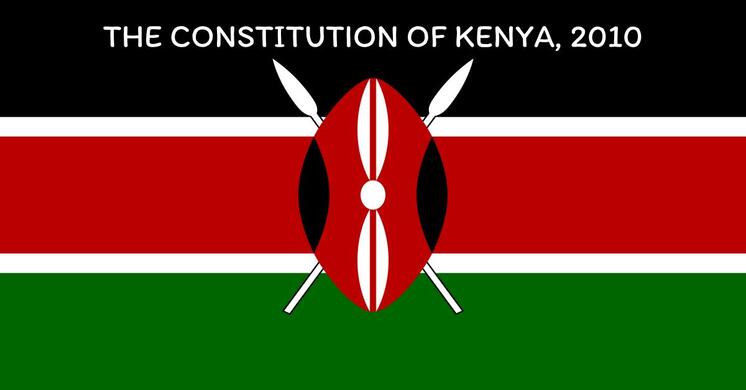
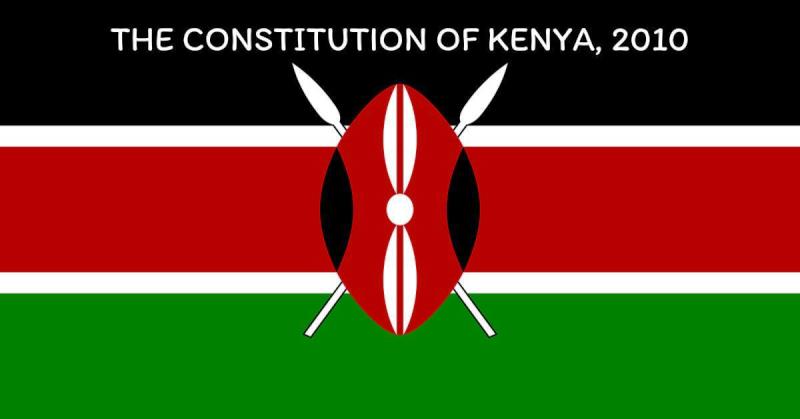
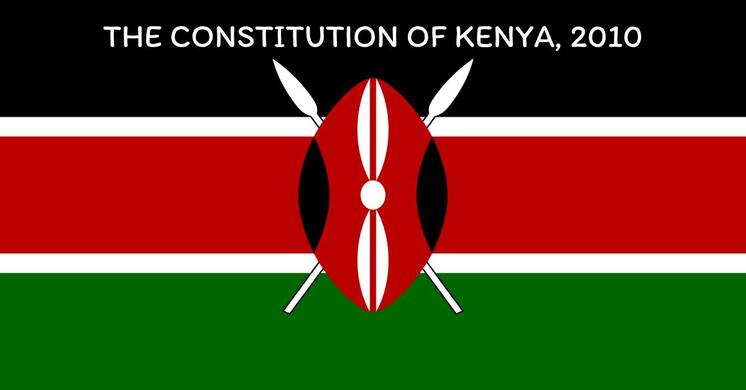
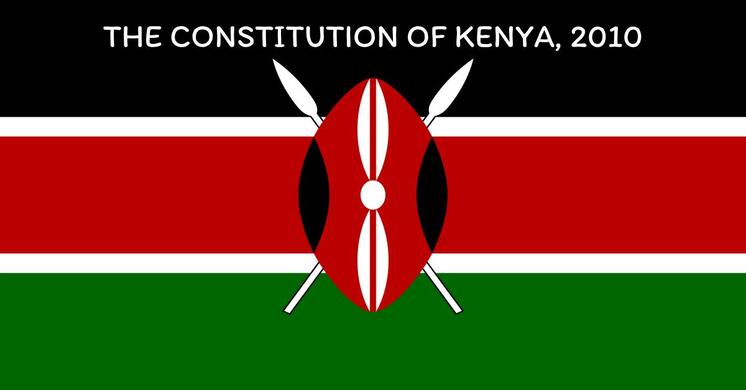
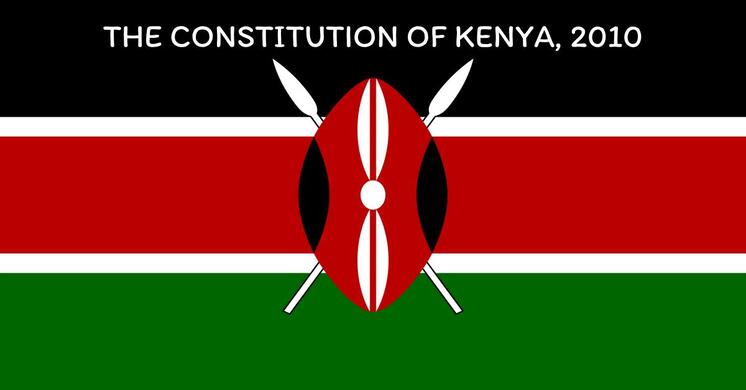
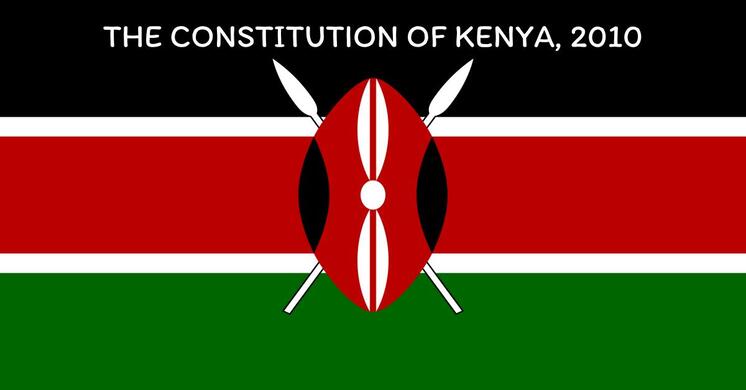
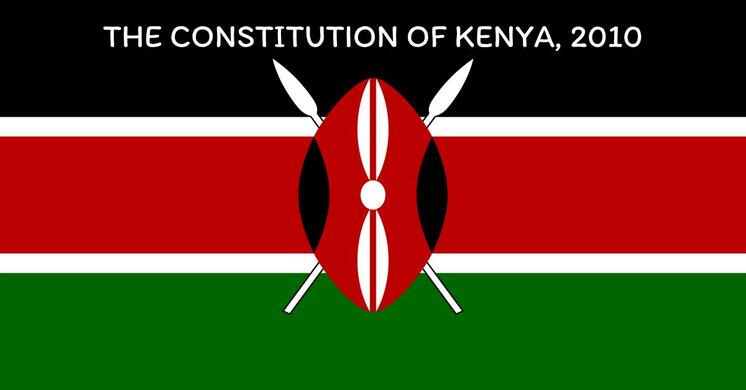
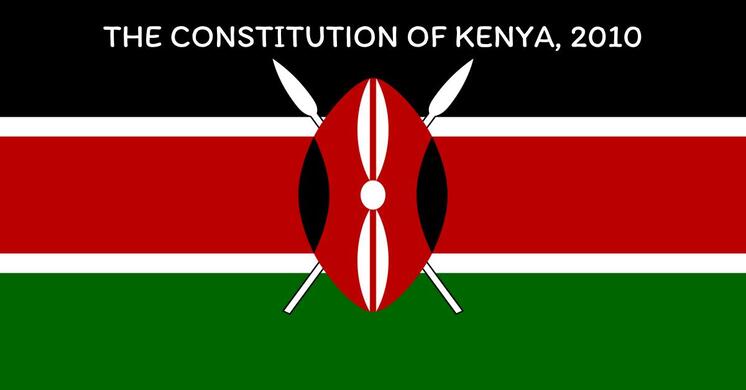
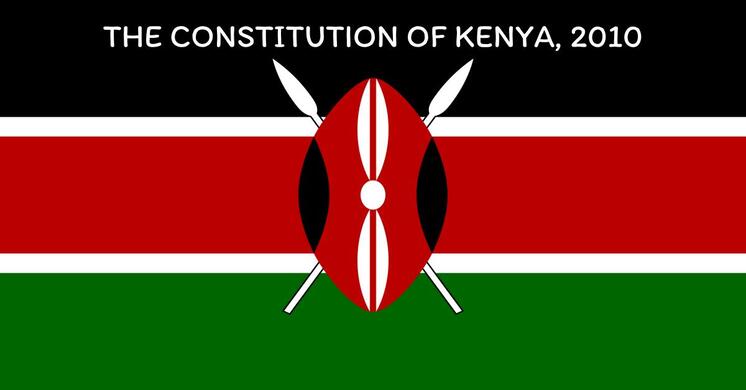
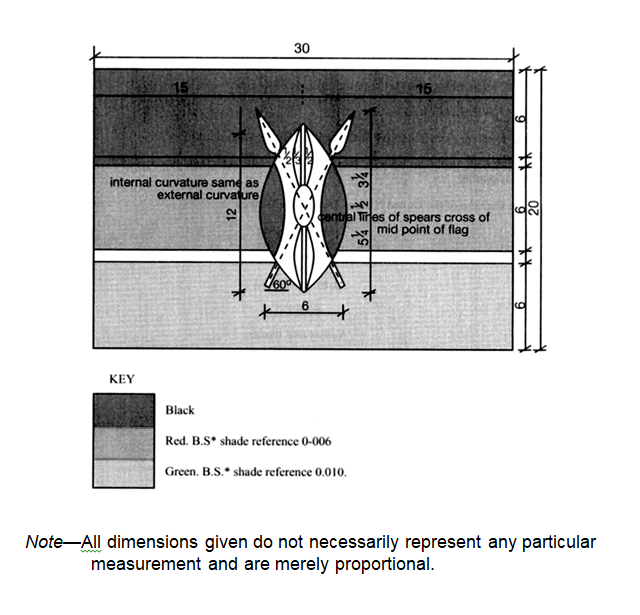
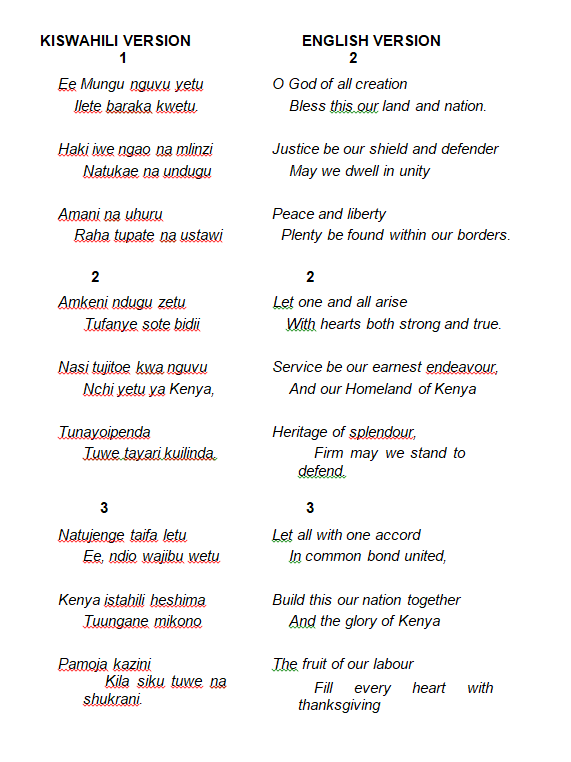
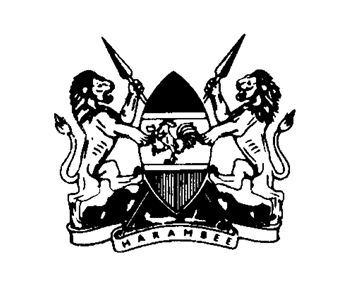
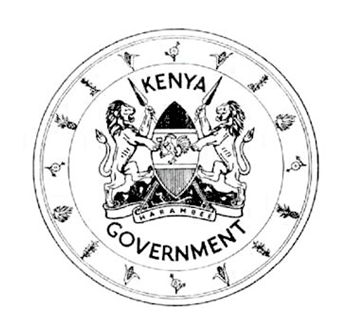
 RSS Feed
RSS Feed